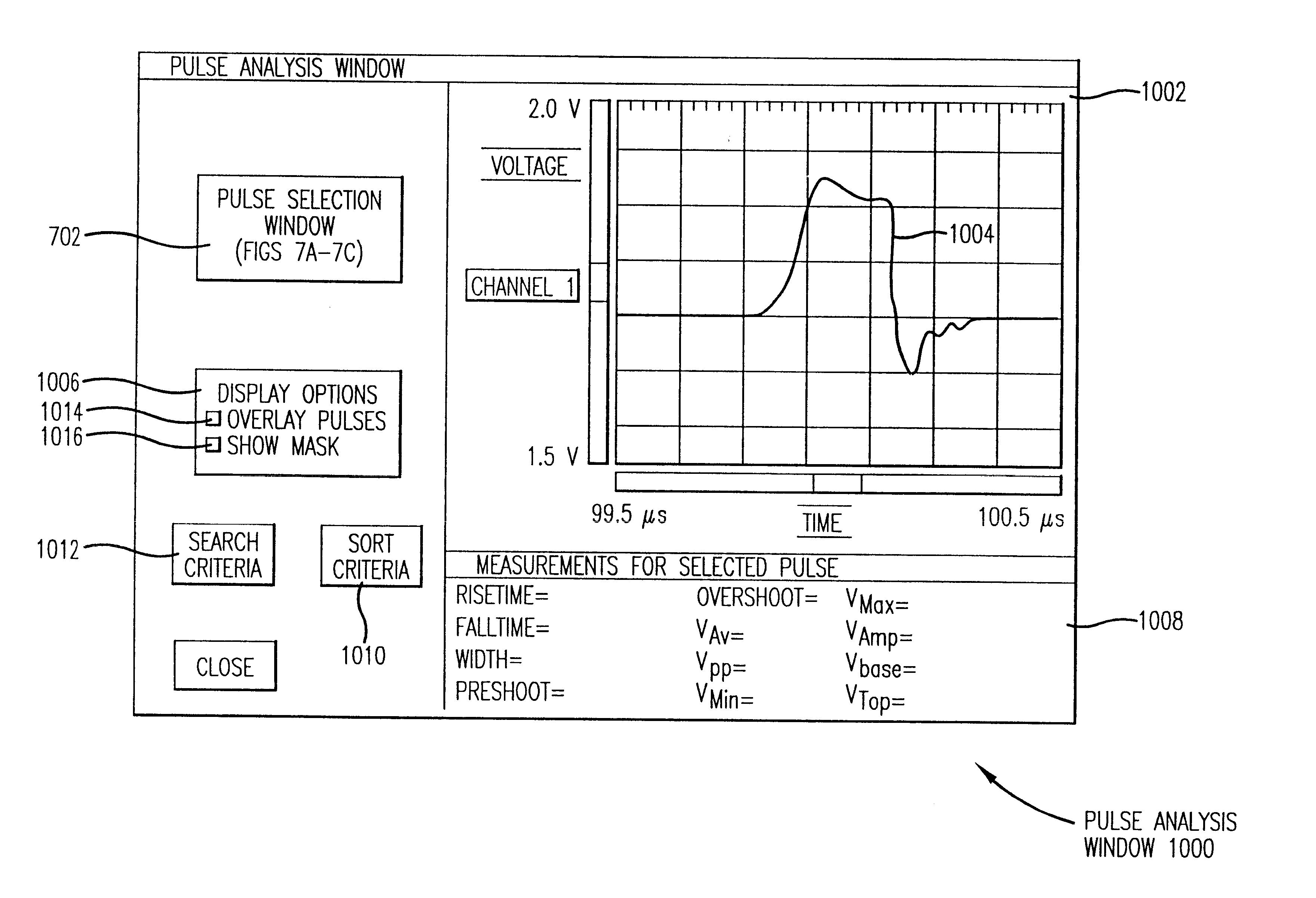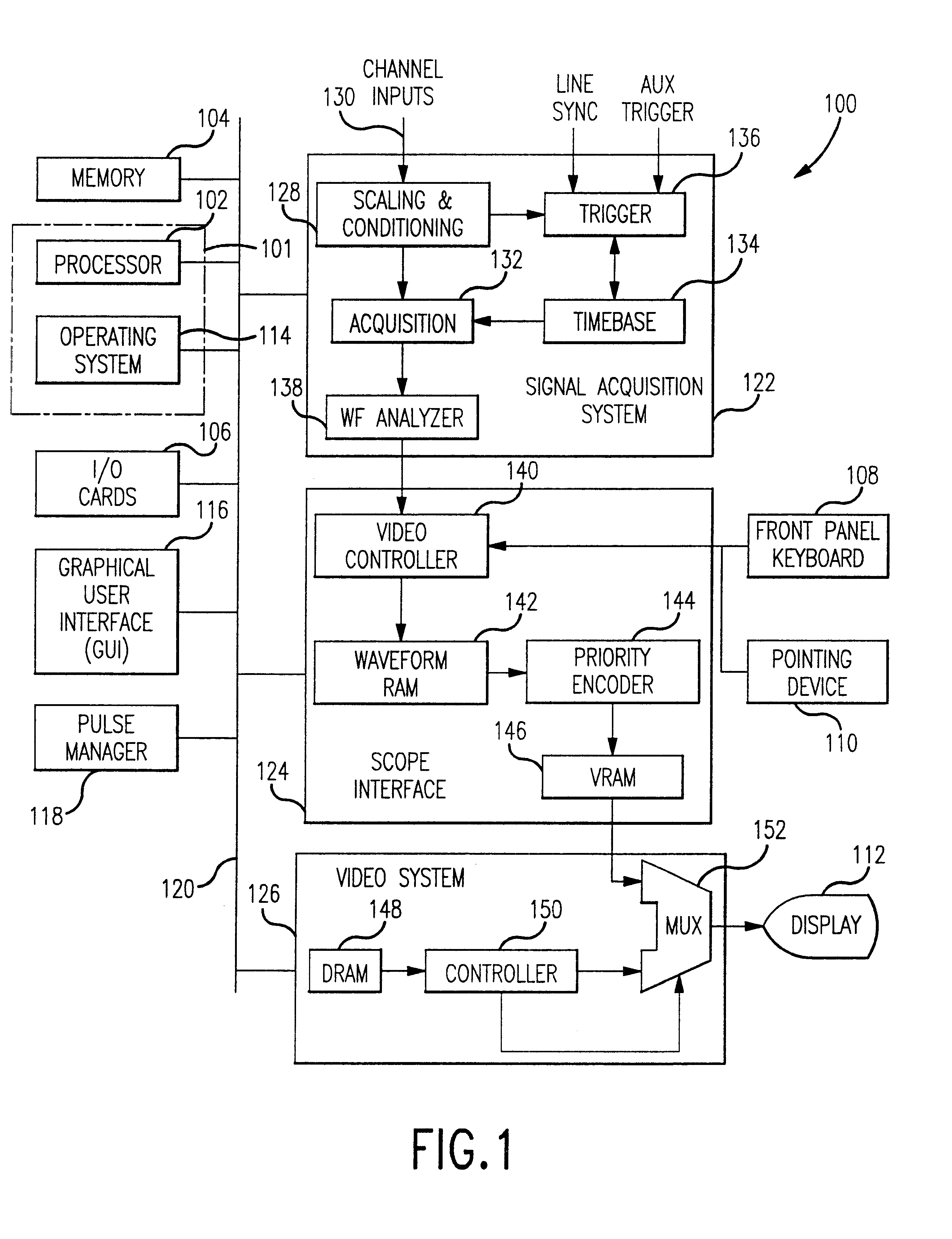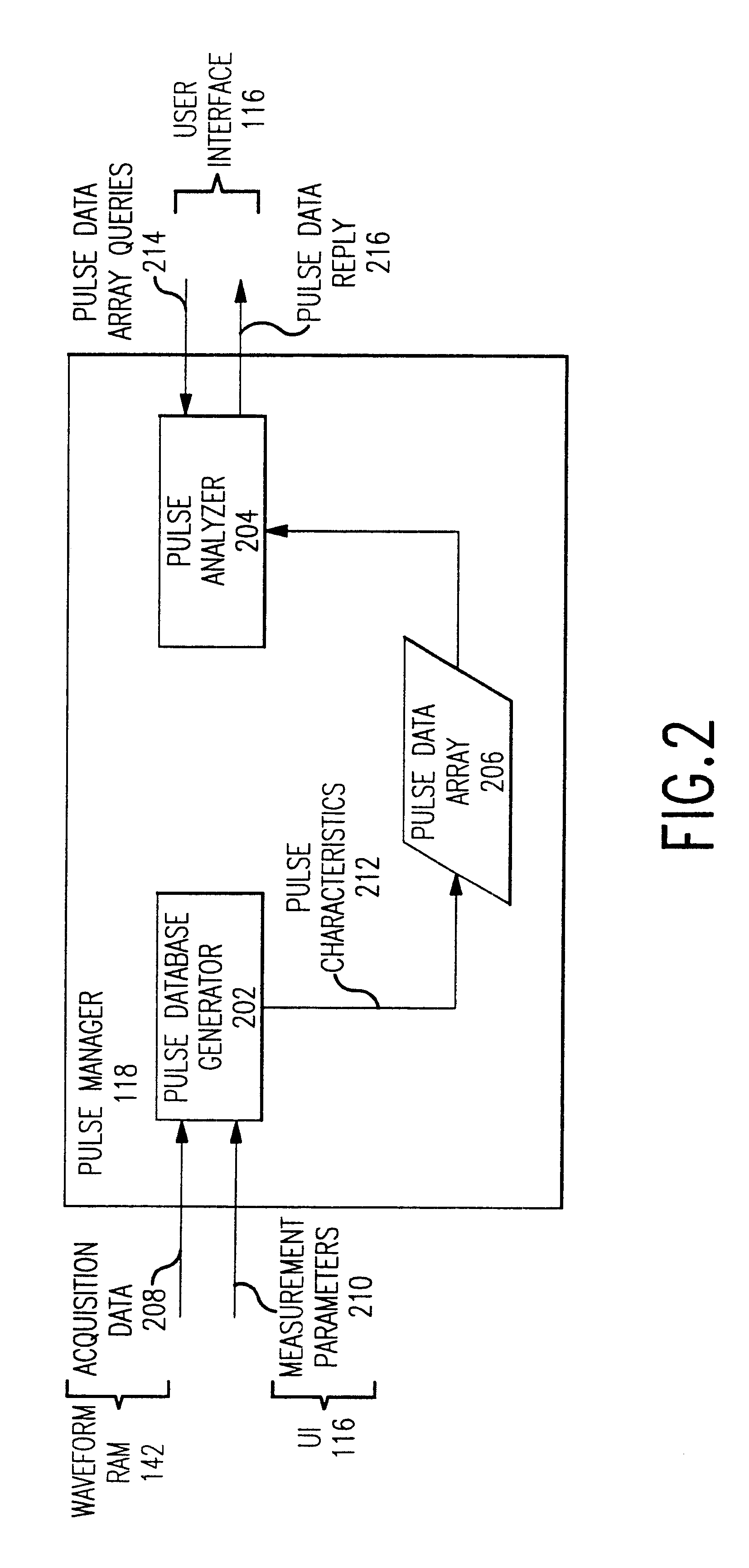System and method for enabling an operator to analyze a database of acquired signal pulse characteristics
- Summary
- Abstract
- Description
- Claims
- Application Information
AI Technical Summary
Problems solved by technology
Method used
Image
Examples
Embodiment Construction
A. High-Level Description
A high-level functional block diagram of one embodiment of pulse manager 118 implemented in digital oscilloscope 100 is shown in FIG. 2. Pulse manager 118 has access to acquisition data 208 stored in an acquisition memory that is part of acquisition block 132 illustrated in FIG. 1. A preferred implementation of pulse manager 118 operates with a user interface such as graphical user interface 116 to receive measurement parameters 210 to guide the pulse measurements and to provide a graphical interactive environment in which the operator can manipulate or otherwise analyze the pulse characteristics 212 stored in pulse data array 206.
Generally, pulse manager 118 comprises two primary operational components and a novel data structure of pulse characteristics 212. A pulse database generator 202 performs, with minimal or no operator involvement, a series of one or more pulse measurements on acquired data 208 stored in acquisition memory. The results of such pulse ...
PUM
 Login to View More
Login to View More Abstract
Description
Claims
Application Information
 Login to View More
Login to View More - R&D
- Intellectual Property
- Life Sciences
- Materials
- Tech Scout
- Unparalleled Data Quality
- Higher Quality Content
- 60% Fewer Hallucinations
Browse by: Latest US Patents, China's latest patents, Technical Efficacy Thesaurus, Application Domain, Technology Topic, Popular Technical Reports.
© 2025 PatSnap. All rights reserved.Legal|Privacy policy|Modern Slavery Act Transparency Statement|Sitemap|About US| Contact US: help@patsnap.com



